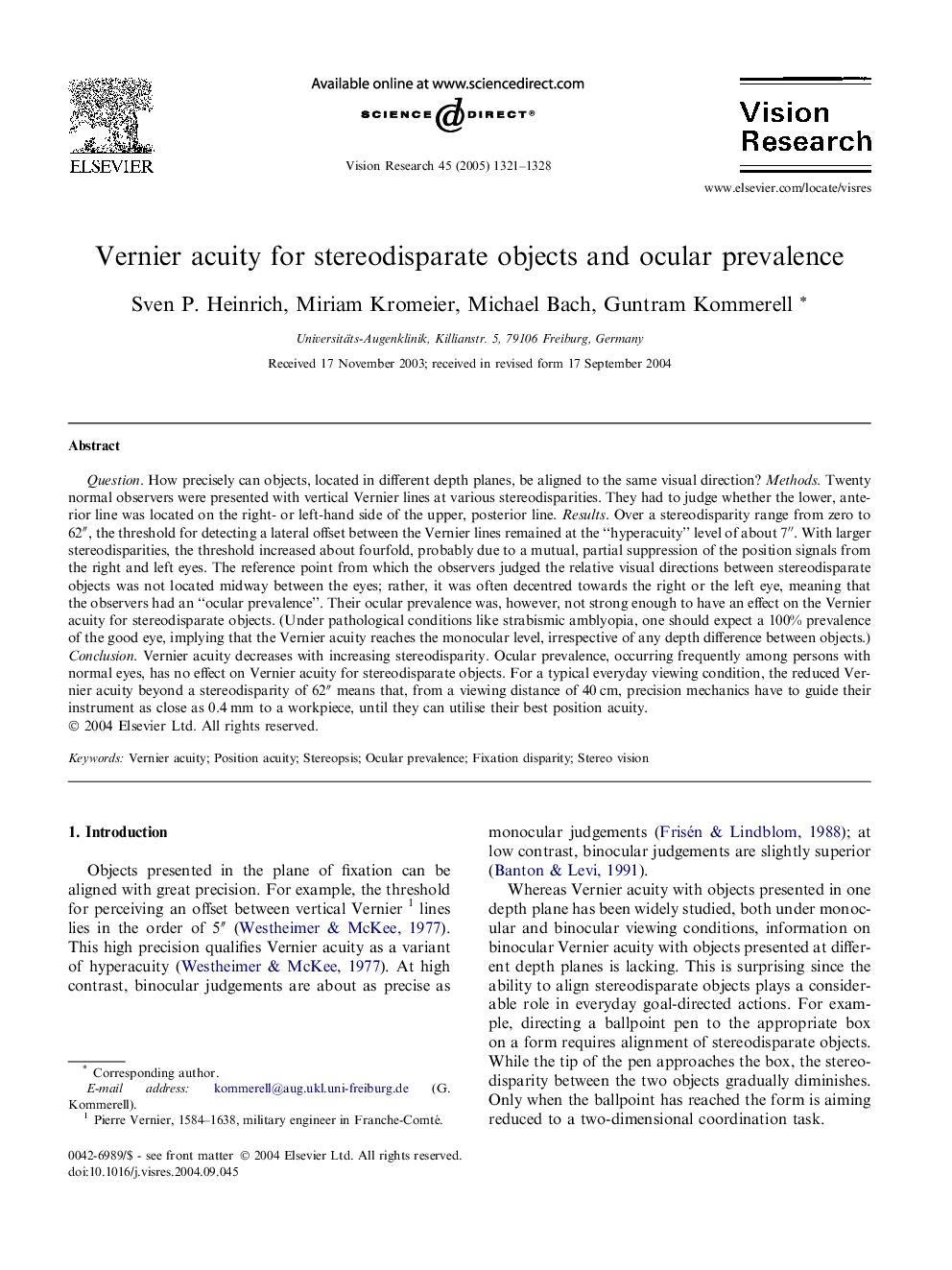| Article ID | Journal | Published Year | Pages | File Type |
|---|---|---|---|---|
| 9348515 | Vision Research | 2005 | 8 Pages |
Abstract
Question. How precisely can objects, located in different depth planes, be aligned to the same visual direction? Methods. Twenty normal observers were presented with vertical Vernier lines at various stereodisparities. They had to judge whether the lower, anterior line was located on the right- or left-hand side of the upper, posterior line. Results. Over a stereodisparity range from zero to 62â³, the threshold for detecting a lateral offset between the Vernier lines remained at the “hyperacuity” level of about 7â³. With larger stereodisparities, the threshold increased about fourfold, probably due to a mutual, partial suppression of the position signals from the right and left eyes. The reference point from which the observers judged the relative visual directions between stereodisparate objects was not located midway between the eyes; rather, it was often decentred towards the right or the left eye, meaning that the observers had an “ocular prevalence”. Their ocular prevalence was, however, not strong enough to have an effect on the Vernier acuity for stereodisparate objects. (Under pathological conditions like strabismic amblyopia, one should expect a 100% prevalence of the good eye, implying that the Vernier acuity reaches the monocular level, irrespective of any depth difference between objects.) Conclusion. Vernier acuity decreases with increasing stereodisparity. Ocular prevalence, occurring frequently among persons with normal eyes, has no effect on Vernier acuity for stereodisparate objects. For a typical everyday viewing condition, the reduced Vernier acuity beyond a stereodisparity of 62â³ means that, from a viewing distance of 40Â cm, precision mechanics have to guide their instrument as close as 0.4Â mm to a workpiece, until they can utilise their best position acuity.
Related Topics
Life Sciences
Neuroscience
Sensory Systems
Authors
Sven P. Heinrich, Miriam Kromeier, Michael Bach, Guntram Kommerell,
